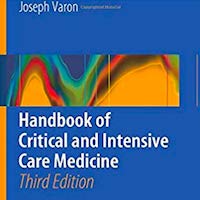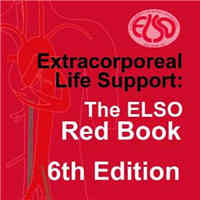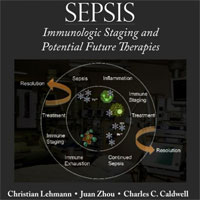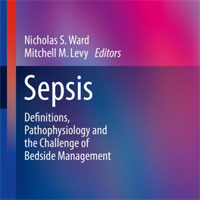Tag: pneumonia
Optimal Needle Position for Decompression of Tension Pneumothorax
Tension Pneumothorax (TP) can occur as a potentially life-threatening complication of chest trauma. With the risk of respiratory and cardiac arrest, an immediate temporizing intervention for this condition is required by... read more
Outcomes of Patients with COVID-19 and Relationship with Lung Ultrasound Signs
In patients with COVID-19 pneumonia, Lung Ultrasound Signs (LUS) signs, including the aeration score, were related to respiratory and systemic symptoms 1 month after ultrasound screening examination. In these patients, a... read more
A Controlled Trial of Methylprednisolone in COVID-19 Pneumonia
The use of corticosteroids in patients with pneumonia secondary to COVID-19 has been a controversially hot topic, particularly early on in the pandemic. Prior evidence seen in Severe Acute Respiratory Syndrome (SARS) and... read more
Virus-Induced Changes of the Respiratory Tract Environment Promote Secondary Infections
Secondary bacterial infections enhance the disease burden of influenza infections substantially. Streptococcus pneumoniae (the pneumococcus) plays a major role in the synergism between bacterial and viral pathogens, which... read more
24-Hour Esophageal pH Measurement in Mechanically Ventilated Children
The current study shows high incidence of gastroesophageal reflux on 24-hour esophageal pH-metry in mechanically ventilated children with medical diagnoses. The significance of this finding and its impact on ventilator-associated... read more
Early Tracheotomy Shortens ICU Stay and Lowers Risk of VAP
Compared with late tracheotomy, early intervention was associated with lower ventilator-associated pneumonia (VAP) rates and shorter durations of mechanical ventilation and ICU stay, but not with reduced short-term, all-cause... read more
Can Ultrasound Predict Histologic Pattern of Lung Injury in COVID‑19 patient?
We have read with great interest the study by de Almeida Monteiro et al. recently published in Intensive Care Medicine, where authors studied the relationship between histopathological data and lung ultrasonographic (LUS)... read more
Endemic COVID-19 Needs Novel, Prognostic Tests to Predict Severity and Progression
COVID-19 has evolved into a long-term population health problem that requires new types of diagnostics. Diagnostic developers, therefore, are called on to expand their developmental focus to include novel tests to predict... read more
Prophylaxis for Pneumocystis Pneumonia in non‐HIV Immunocompromised Patients
Our review shows that TMP/SMX prophylaxis is highly effective for prevention of Prophylaxis for Pneumocystis Pneumonia (PCP) in patients with hematological malignancies, bone marrow transplantation and solid organ transplantation,... read more
Medical oxygen crisis: a belated COVID-19 response
More than a year into the pandemic, global health agencies have set up a taskforce to address the vast unmet demand for medical oxygen. The global pandemic response mechanism, the Access to COVID-19 Tools Accelerator (ACT-A),... read more
Efficacy of Serum Angiotensin II Levels in Prognosis of Patients with COVID-19
The serum angiotensin II levels decrease significantly in patients with coronavirus disease 2019, and this decrease is correlated with lung damage. There was no statistical significance between the serum angiotensin II... read more
Point-of-Care Ultrasound (POCUS) and COVID-19
COVID-19 is a disease caused by infection with SARS-CoV-2, a virus that affects multiple organ systems with numerous disease manifestations. COVID-19 has a specific tropism for the lower respiratory tract, and the most common... read more
No Significant Difference between Tocilizumab and Placebo in Severe COVID-19 Pneumonia Patients
In this randomized trial involving hospitalized patients with severe COVID-19 pneumonia, the use of tocilizumab did not result in significantly better clinical status or lower mortality than placebo at 28 days. In this... read more
Interleukin-6 Receptor Antagonists in Critically Ill Patients with COVID-19
In critically ill patients with COVID-19 receiving organ support in ICUs, treatment with the interleukin-6 receptor antagonists tocilizumab and sarilumab improved outcomes, including survival. Both tocilizumab and sarilumab... read more
Effect of Nurse-Led GDLPT on the Prognosis of Pneumonia in Sepsis Patients in the ICU
Nurse-led goal-directed lung physical therapy (GDLPT) improved the outcomes of pneumonia in sepsis patients, and was particularly associated with shortened mechanical ventilation duration and ICU stay, and reduced ICU mortality... read more
Helmet CPAP to treat hypoxic pneumonia outside the ICU
Respiratory failure due to COVID-19 pneumonia is associated with high mortality and may overwhelm health care systems, due to the surge of patients requiring advanced respiratory support. Shortage of intensive care unit... read more
SOFA Score Accuracy For Determining Mortality Of Severely Ill Patients With COVID-19 Pneumonia
The SOFA score possesses inadequate discriminant accuracy to be used for ventilator triage of COVID-19 patients. A better option is needed that incorporates variables specifically related to mortality in patients with COVID-19... read more
Epidemiology and microbiology of ventilator-associated pneumonia in COVID-19 patients
The COVID-19 pandemic is responsible for many hospitalizations in intensive care units (ICU), with widespread use of invasive mechanical ventilation (IMV) which exposes patients to the risk of ventilator-associated pneumonia... read more
Study finds genetic clues to pneumonia risk and COVID-19 disparities
Researchers at Vanderbilt University Medical Center and colleagues have identified genetic factors that increase the risk for developing pneumonia and its severe, life-threatening consequences. Their findings, published... read more
Human ACE2 peptide-mimics block SARS-CoV-2 pulmonary cells infection
The current pandemic originated by SARS-CoV-2 causes an unprecedented health crisis. The medical world has found itself helpless in the face of this virus, having to deal with the absence of specific effective treatment.... read more
An Index Combining Respiratory Rate and Oxygenation to Predict Outcome of Nasal High-Flow Therapy
In patients with pneumonia with acute respiratory failure treated with high-flow nasal cannula (HFNC), ROX is an index that can help identify those patients with low and those with high risk for intubation. This was a... read more
Mediastinal lymphadenopathy may predict 30-day mortality in COVID-19 patients
Along with older age and consolidation pattern,enlarged mediastinal lymphadenopathy was found to be an independent predictor of 30-day mortality in patients with COVID-19. Although enlarged mediastinal lymphadenopathy... read more









